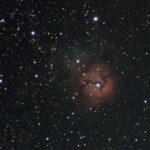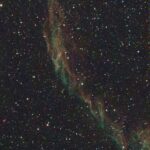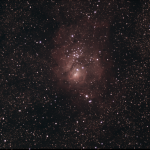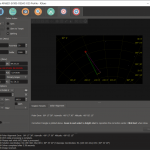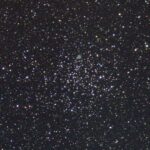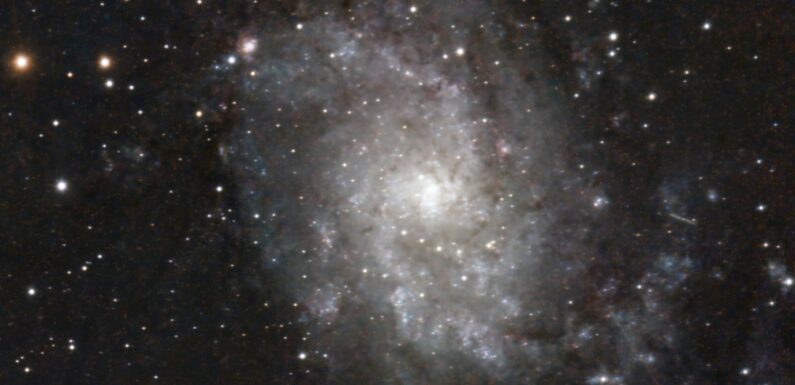
Pretty nice night. Clear, cool, bit of a bright Moon but that’s fine. I decided to set out the SeeStar S50 to give EQ Mode a try. After dark I switched the SeeStar into EQ Mode and preformed the polar alignment. Picked the M33, the Triangulum Galaxy, as the target to attempt to get a couple of hours of data.
A month ago I picked up a Sky Watcher Star Adventurer EQ Base (Part #: S20530) to attach to my CG5 mount to use the SeeStar S50 in EQ Mode. Attached the EQ Base to the CG5 mount and leveled it using the bubble level on the Sky Watcher Star Adventurer EQ Base. Secured the SeeStar to the dovetail and attached the dovetail to the EQ base with the power button facing up. Then waited for the Sun to set.
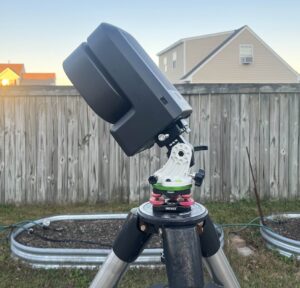
Once it was dark, I connected to the SeeStar S50 with the SeeStar app and accessed the Advanced Settings to switch the Mount Mode from Alt/Az Mode to EQ Mode. Followed the prompts in the app to adjust the Sky Watcher Star Adventurer EQ Base till the app was reading the proper elevation (37 degrees). Then preformed the “Get Polar Align Deviation” function which determines the azimuth and elevation errors to allow you to make adjustments.
A few adjustments using the adjustment knobs on the Sky Watcher Star Adventurer EQ Base and the SeeStar app displayed a big green check (1 degree or less error). I ran the “Get Polar Align Deviation” function a couple of times just to make sure it was dialed in. This took surprisingly less time than I thought it would, I had everything dialed in with approximately .5 degree of error in both azimuth and elevation in just a few minutes. I really thought it was going to be more difficult to polar align… pleasantly surprised.
I increased the exposure time from 10 seconds to 20 seconds and had the SeeStar slew to M33. Started the enhancement and let it go. It worked pretty well. Dropped a few frames here and there, but overall some good data. Very little stacking artifacts at the edges, and no field rotation!
This is a Messier 33, M33, or the Triangulum Galaxy in the constellation of Triangulum. Like our own galaxy, the Triangulum Galaxy is a member of the Local Group. The galaxy is approximately 3.2 Million Light Years away, so relatively close to us in the grand scheme of things. This is a SeeStar stack of 390 x 20 second exposures, about 2 hours and 10 minutes of data, stacked and saved directly from the SeeStar.

This is the same SeeStar stack after a bit of tinkering in PixInsight.
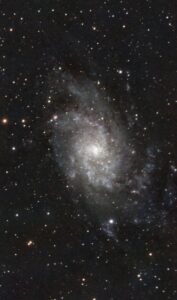
Not bad for only 2 hours of data. Shame about that one satellite trail through the middle. I may try to do some tinkering in PixInsight to see if I can remove it. Still a not a bad image.
I was not really sure setting the SeeStar in EQ Mode was going to be worth the effort, but it was really simple and quick to set up. Much less hassle than I thought it was going to be. The efforts resulted in the ability to do longer exposures with fewer dropped frames to get a pretty nice image. Next time I am going to see how 30 second exposures go.
The clocks fell back and hour here in Suffolk, VA last night… you know what that means… we will be able to start gathering far away light an hour earlier 🙂
Clear skies…

